Two art exhibitions currently running in Hong Kong offer a glimpse into the range of artistic expressions and practices in vogue on the Chinese mainland. Chitralekha Basu reports.
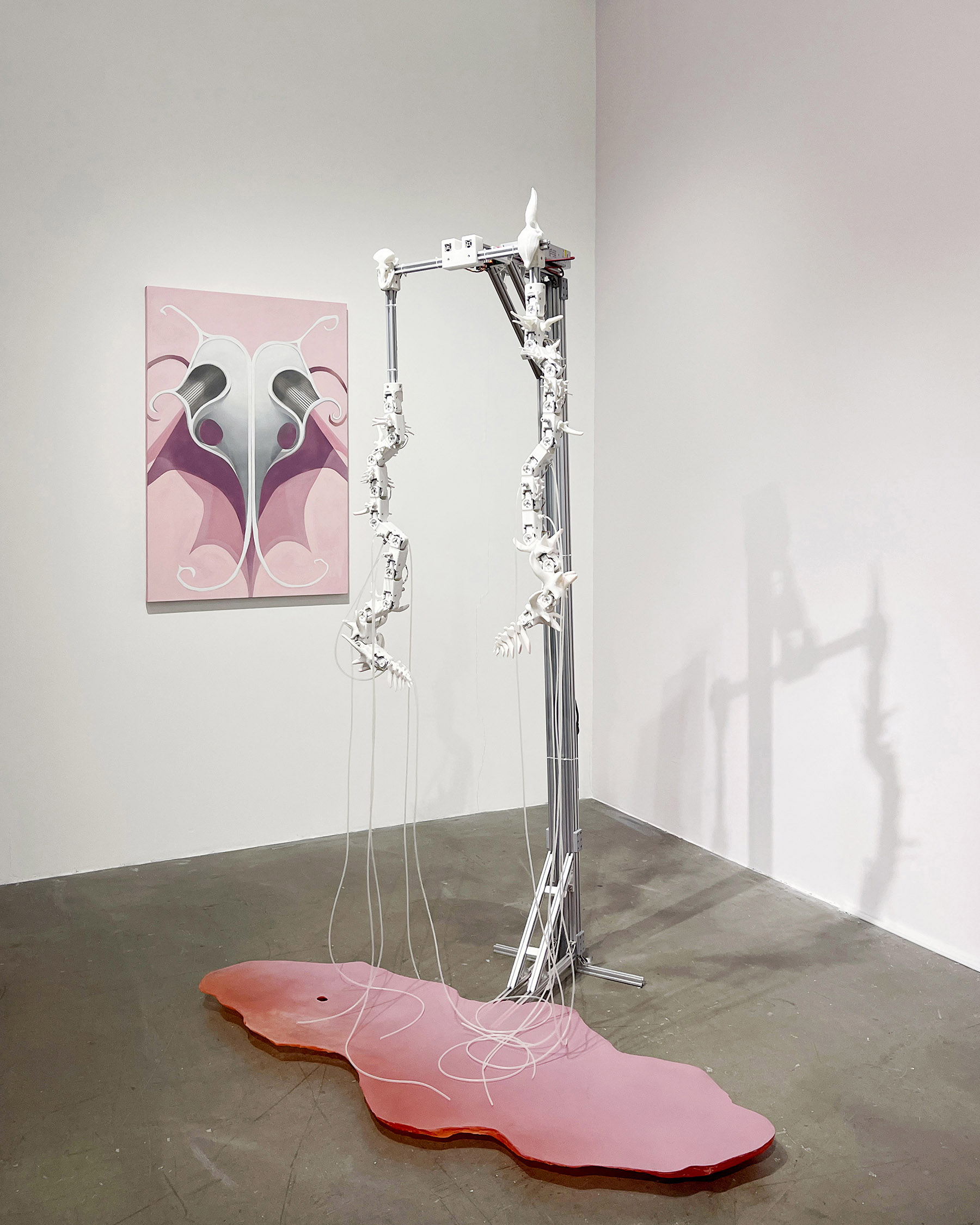
Two art exhibitions stand out in a crowd of others running in Hong Kong this summer. On the face of it, The Great Manual of (Post) Human Anatomy, at Hanart TZ Gallery, and Awakened by Nature, presented jointly by PhillipsX and White Space, couldn’t be more different, except perhaps that the curatorial duo behind the former as well as the two artists featured in the latter are from the Chinese mainland, and all four are women.
However, since all 16 artists in the two exhibitions have Chinese roots, when viewed side by side, they give us a glimpse into the rather expansive range of artistic expressions and practices emerging from the mainland at this moment.
READ MORE: Straight from the heart
Soft pastel colors dominate the concrete, industrial-looking walls of the sprawling PhillipsX gallery in the West Kowloon Cultural District — the venue of Awakened by Nature. The exhibition is meant to showcase new works by Li Shurui — who divides her time between Beijing and Dali, Yunnan province — and the Shanghai-based Shi Zhiying. Both artists are in their early 40s. And both seem to prefer a lighthearted, playful approach. There is a disarming simplicity about the shiny, smooth rotundity of Li’s board-mounted pair of stacked pots and Shi’s images of auspicious guardian lion sculptures. Traditionally, these are meant to look menacing, but in Shi’s renderings, the mythical beasts wear a smirk. One of them is even seen tossing a blue ball into the air.
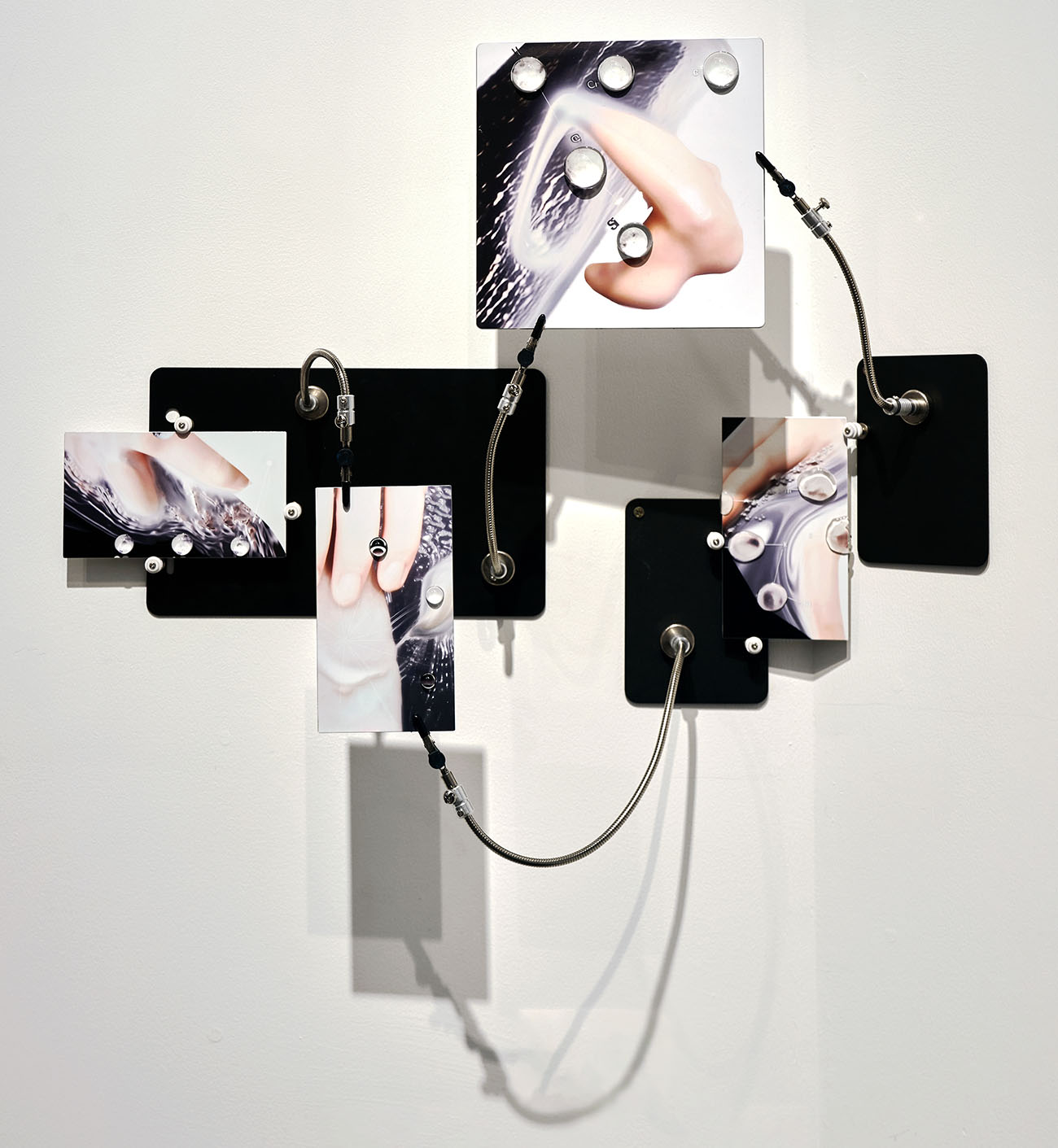
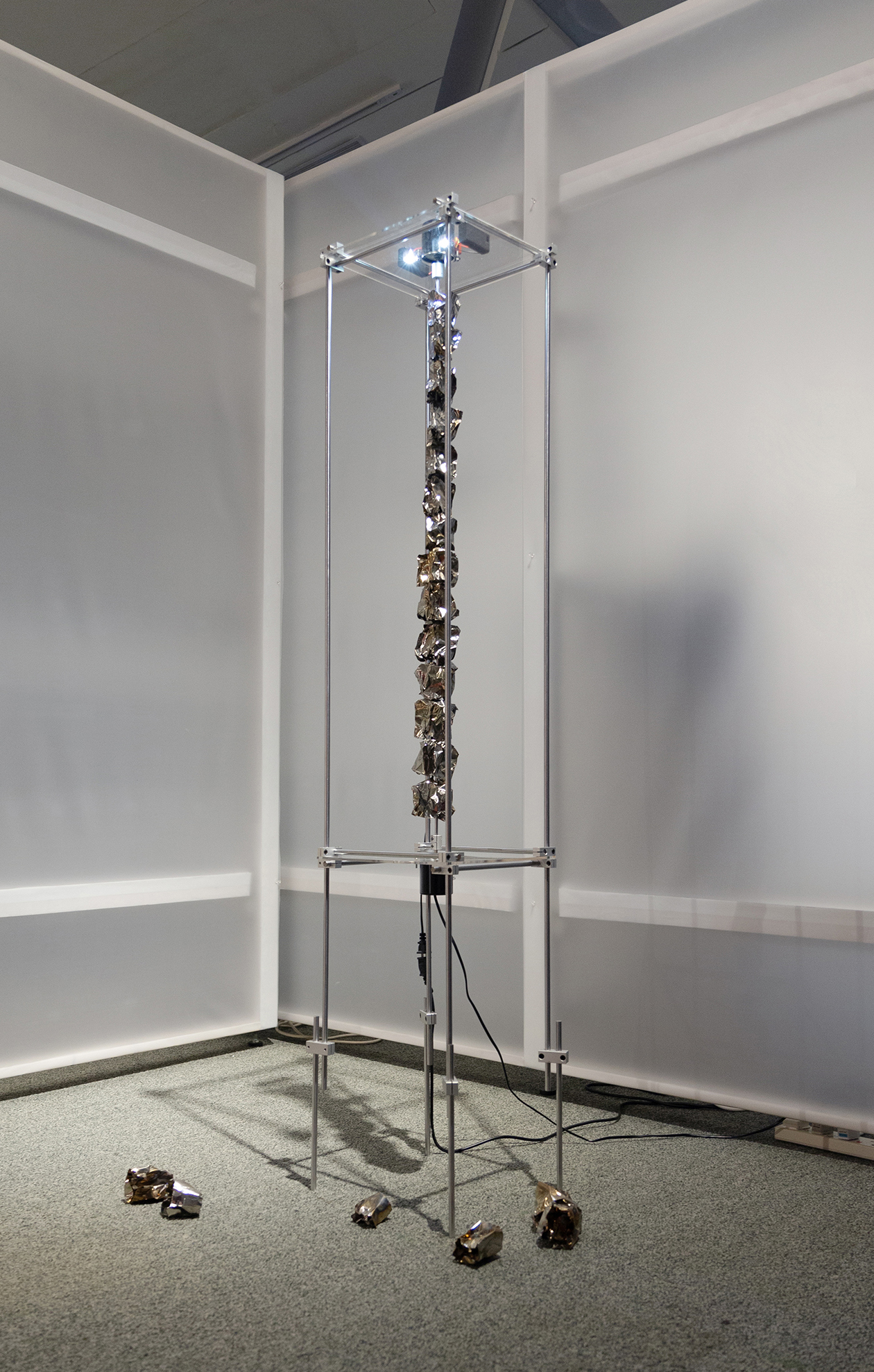
Re-viewing the body
By contrast, the millennial curators of (Post) Human Anatomy, Dia Yu and Abby Chen, have tried to tackle the vast and complex theme of the evolution of the human body, as its journeys through our mechanized present and into an imaginary bionic future. A winner of the ECP: Stars Emerging Curator Project, held under the aegis of the China Academy of Art in Hangzhou, (Post) Human Anatomy takes its cue from Benjamin Hobson’s A New Theory of the Body (1851), which introduced the Western concept of human anatomy to a Chinese audience.
Hobson’s text posed a challenge to the way the human body was being read as per traditional Chinese medical guidelines. Similarly, (Post) Human Anatomy is an attempt “to present a new or revolutionary way of viewing the body”, says co-curator Yu. The show’s ambition, she adds, is “to reconfigure the body in a new ‘generative’ perspective as a new open and diversified site. In this site, we want to embrace all differences and reflect on the relationship between humans and species often classified as ‘the others’”.
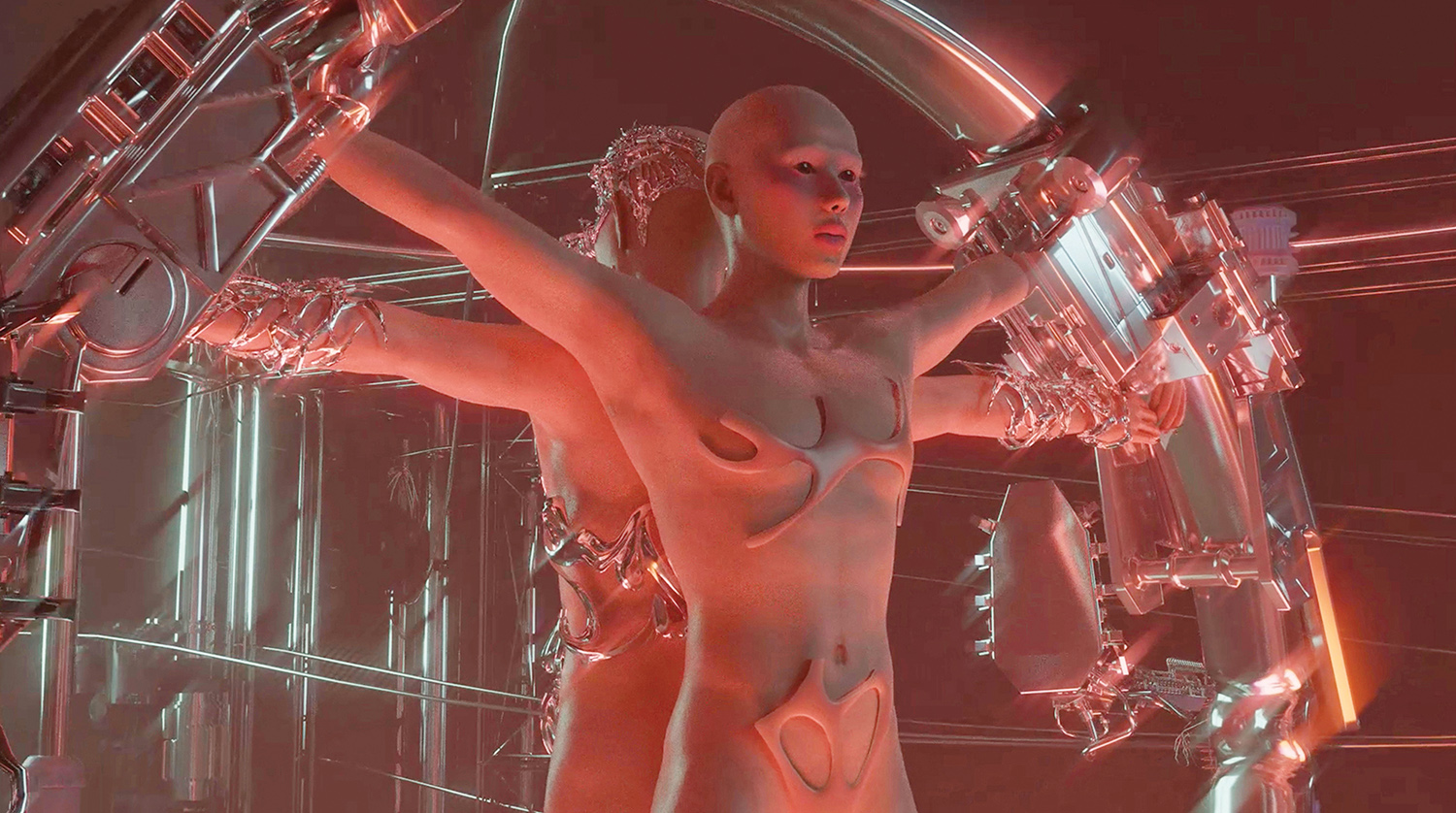
For instance, two of the video installations at the exhibition, Chen Yu’s The Alter Ego and Weddings by Xu Jing and Vic Fu, depict cyborgs — computer-generated androgynous figures in the case of the former, and Xu herself dressed up as a part-bionic creature shown as getting married to Fu playing a sexually ambiguous human in the latter.
According to co-curator Chen, Weddings presents “a provocative and somewhat counterintuitive possibility” to the idea that our increasing dependence on machines, and particularly artificial intelligence, will inevitably lead to a dystopian future. On the contrary, “machine intervention in our bodies and minds could potentially foster a more-inclusive society by breaking down traditional barriers of communication and experience,” she says. “By creating a shared technological interface for human interaction, these interventions might allow for more direct empathy and understanding across diverse groups, transcending current limitations of language, culture and individual perception.”
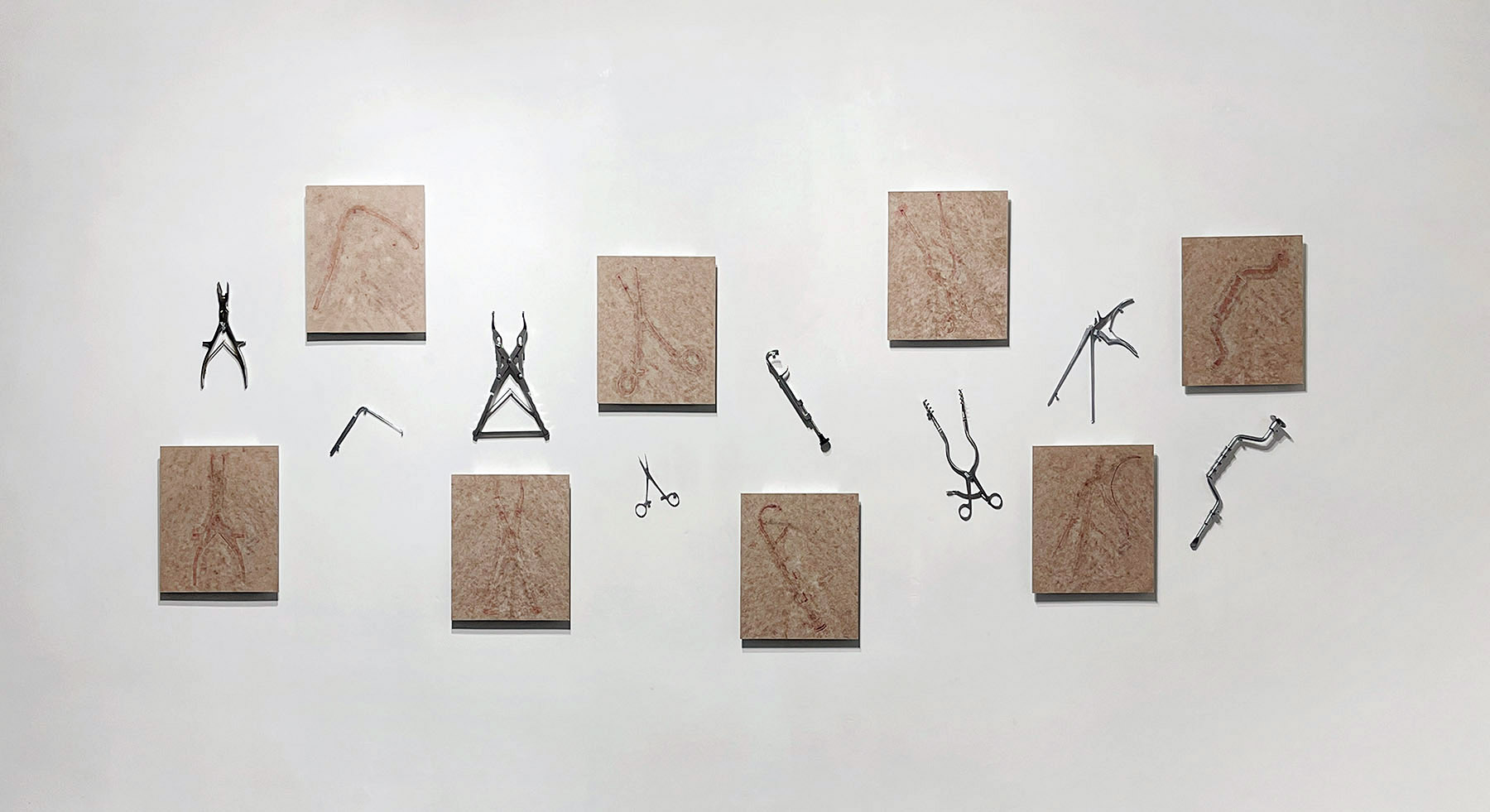
Abstract yet familiar
The idea of finding a new lens to view things that seem over-familiar is at the heart of both exhibitions. For instance, in Awakened by Nature, Shi’s paintings of mythological figures and animals have an ephemeral quality to them. They look as if they might disappear into the background, like figures drawn on a sea beach, as soon as the viewer turns their back. The artist says she prefers viewers to take their time over her works, continue to find newer details and meanings in them through prolonged engagement in order to appreciate the fact that “manifestation and disappearance can coexist”.
Shi’s guideline for viewers applies equally to Li’s paintings of the streetlights in her native city of Chongqing. In Li’s deft hands, the lights take on the shape of clusters of Bokeh molecules that are, at the same time, part of a larger geometric pattern covering the entire canvas. Highly abstract, and yet eminently recognizable, her works are imbued with a sense of three-dimensionality and movement.
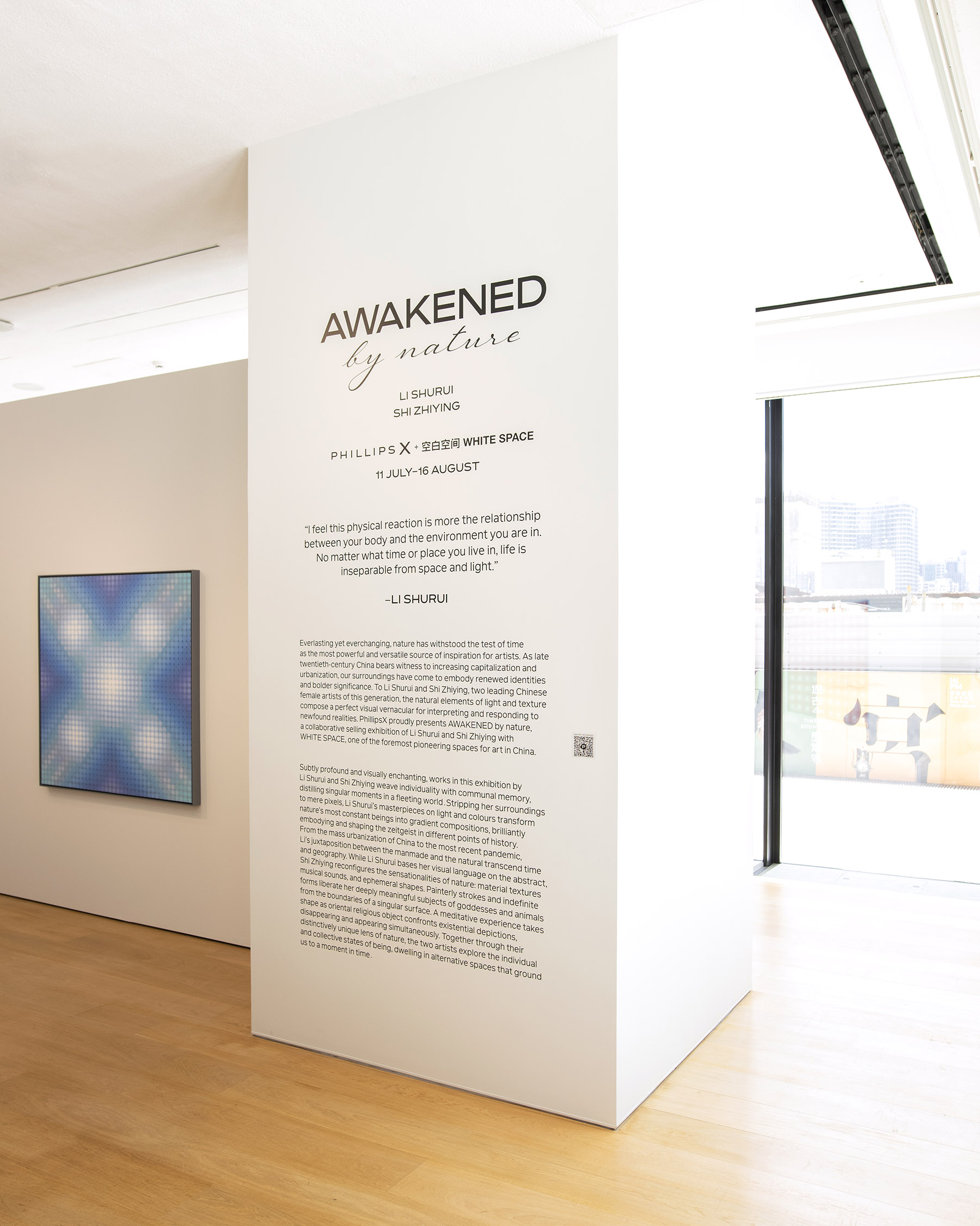
The artist explains that her works are essentially a study of light and its relationship to space. “I think light is one of the most positive things in the world,” she adds. “The senses of volume and color that we experience are also gifts of light. If you look closely, the light that seems to dwell on a picture is not completely static.”
Trying to arrest the inherent motion in light and put it in a frame sounds incredible, until one sees Li pull it off with aplomb. “When we use the terms light and shade to describe the passage of time, I feel we are actually referring to measuring the lengths of our lives in terms of the interplay of light and shade that we see around us,” she says, offering an insight into her artistic philosophy.
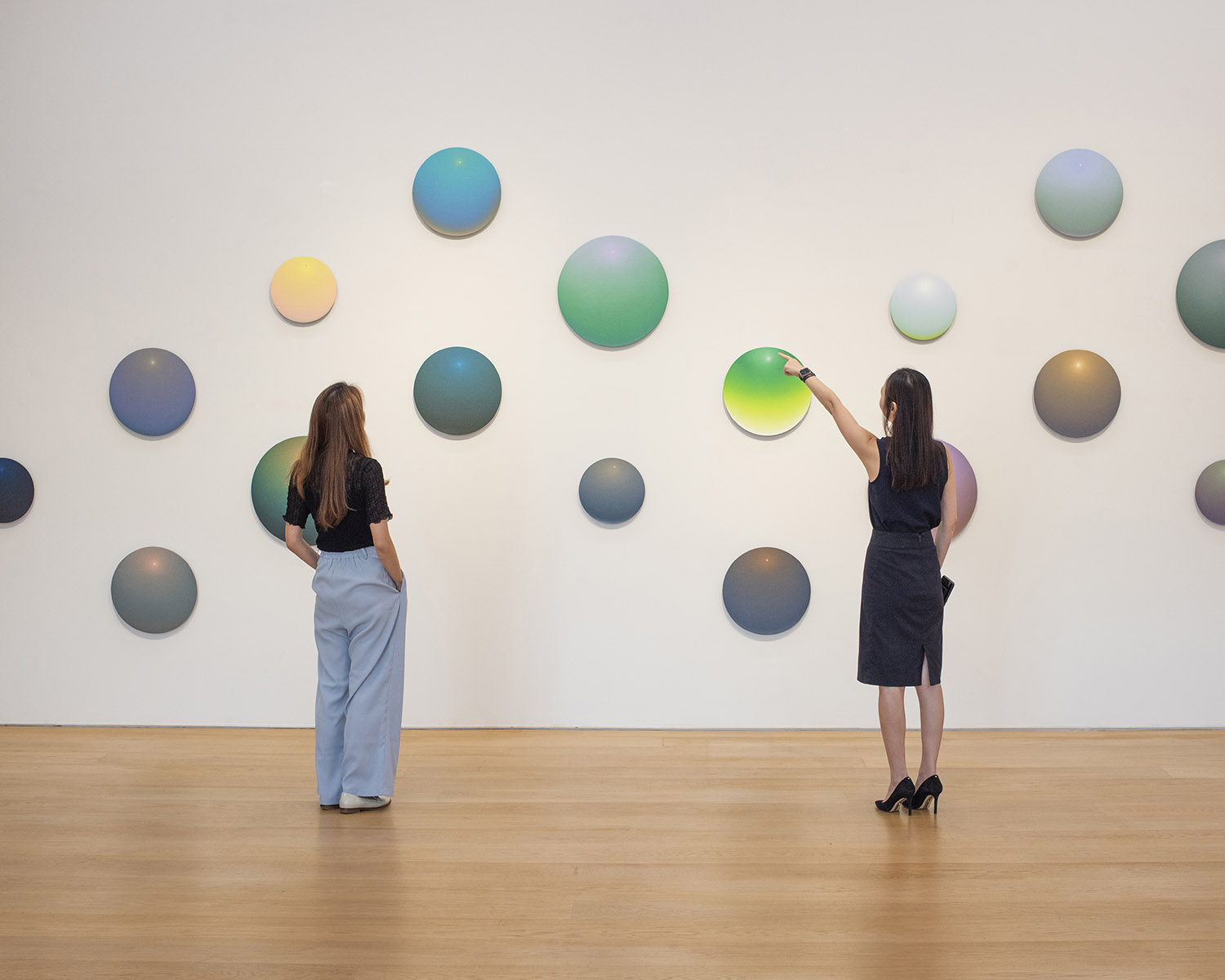
Of machines and minds
In (Post) Human Anatomy, some artists use a completely different set of apparatus to portray the passage of time and its impact on the human body.
In Y-Hatcher’s Body Rubbings, surgical instruments pinned to the wall alternate with extreme close-ups of what looks like human skin bearing the imprint of those same instruments. Lin Yuxin, on the other hand, pictures the human spine as a stacked column of crumpled iron sheets in Rusty Body. From time to time, a piece of these decaying “vertebrae” falls off the motorized installation. Both Body Rubbings and Rusty Body draw attention to the impact of modern-day lifestyles on the human body — be it subjecting it to invasive surgical procedures, and not always out of necessity, or sitting at one’s desk at a stretch for far longer than is recommended in medical science.
“Long before we started exploring the idea of human-machine hybrids, our reliance on technology had caused us to unconsciously cede certain functions performed by our bodies to machines,” says co-curator Yu. “Therefore, when we swipe our fingers on a screen, drive a car, or wear virtual-reality glasses, it can be seen as a gradual process of de-humanization or othering of our bodies.”
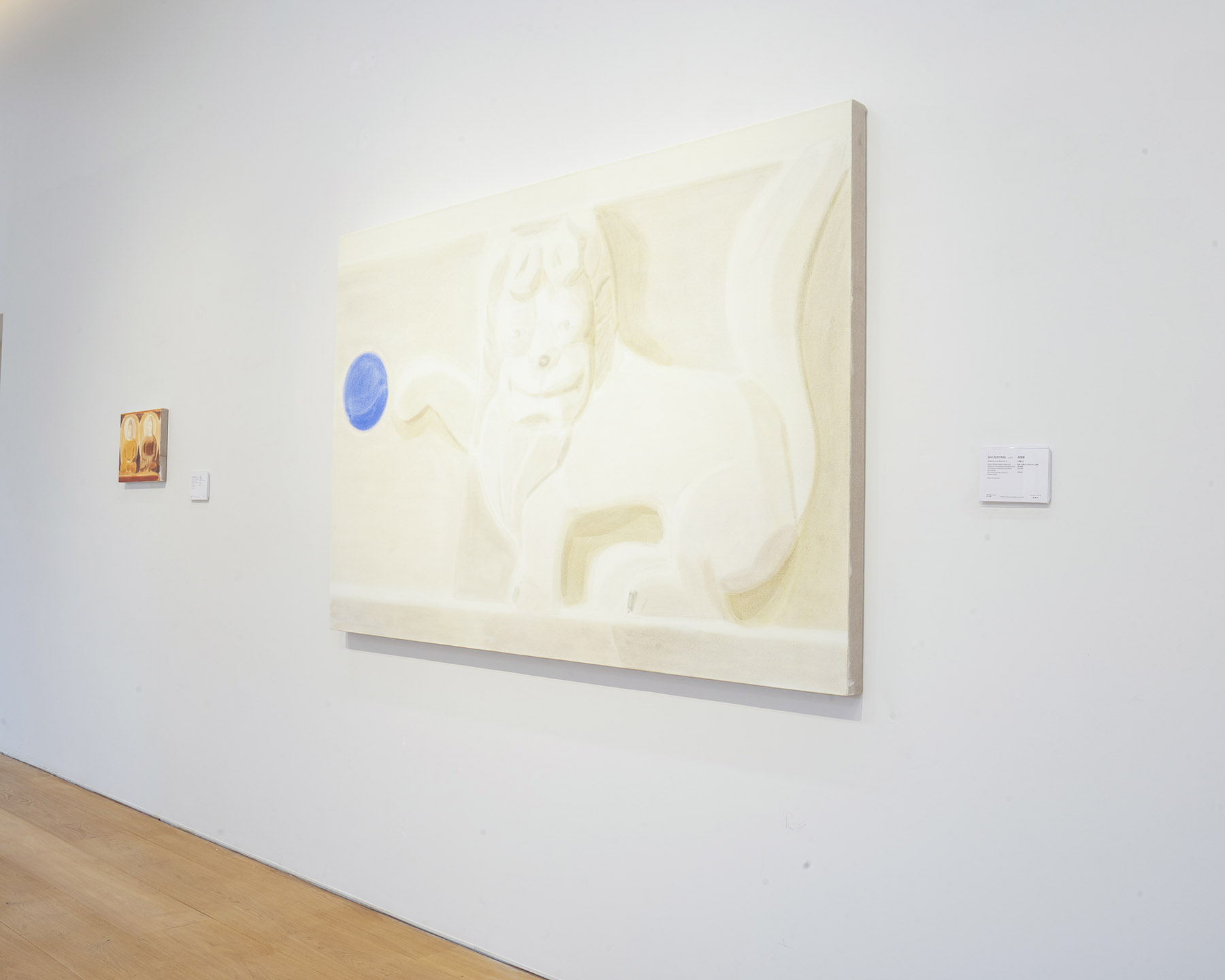
While phones serving as prosthetic extensions of our hands is part of our present reality and an irreversible process, a number of works in (Post) Human Anatomy seem to be contesting the idea that in a bionic age — and we’re probably already living in one — emotions matter less and less.
For instance, a pair of automated tail bones is seen gently wagging at each other, almost like a slow dance, in Cui Yu’s mixed-media installation, Instinctual Language. The emotional vibe between the tail skeletons, which refer to the loss of tails in humans several millions of years ago, is quite palpable.
Co-curator Chen agrees that some of the artists “seem to be asserting the continued relevance and power of embodied emotional expression, even as we become increasingly enmeshed with technology”. “They might be reaffirming the importance of our physical, emotional selves in dialogue with technological advancement.”
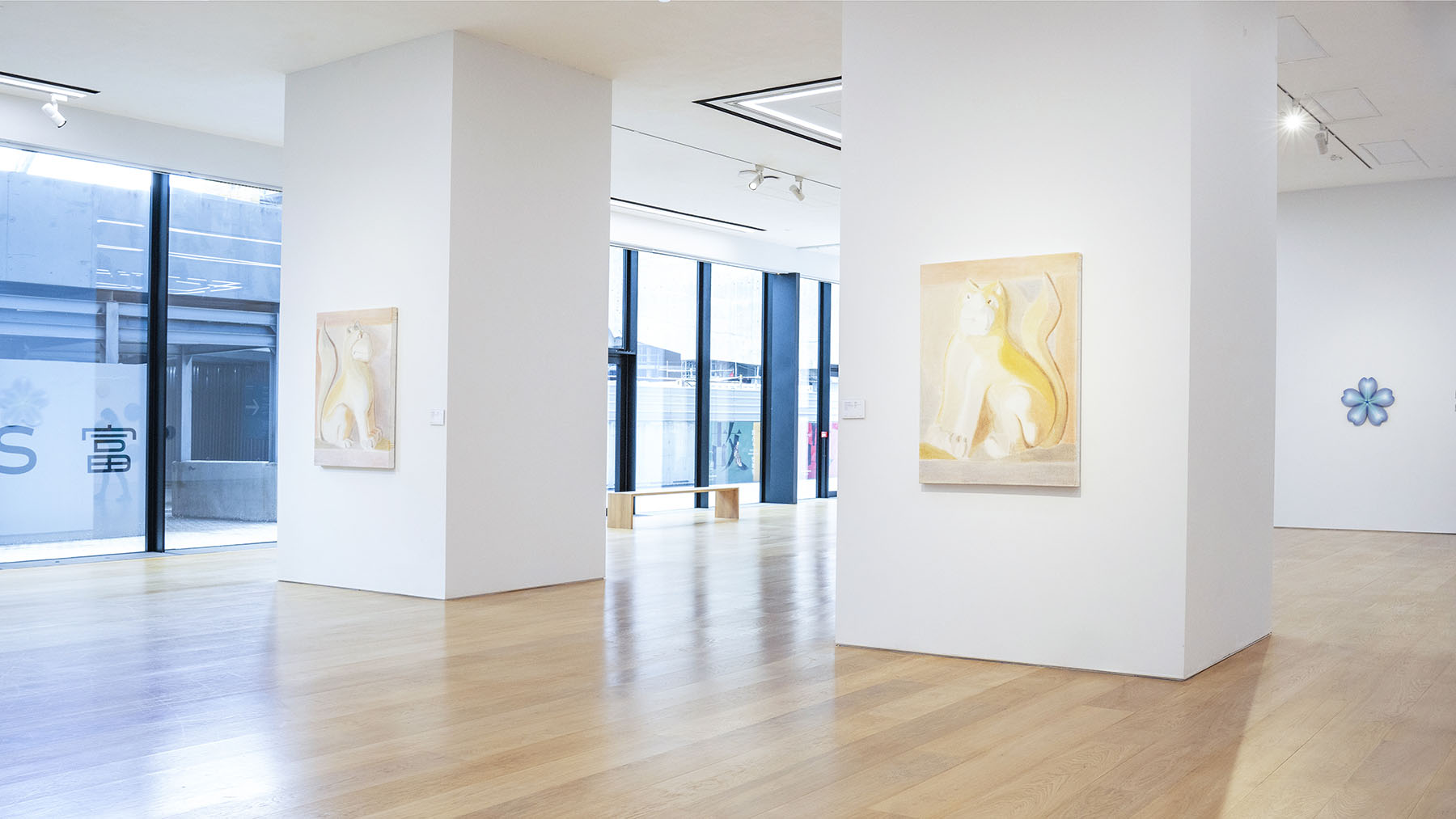
However, she hastens to point out, “whether these artists are simply highlighting the body’s emotional capacities, or if they’re actively arguing against the diminishment of emotion in a tech-driven world depend

s on the specific content and context of each piece.”
ALSO READ: The green touch
Ren Ruoxi’s Electronic Eucharist might be an example of the latter. The piece combines a familiar Christian ritual performed through physical contact between the priest and parishioners with industrial elements — displaying magnified images of body parts that get touched during Holy Communion on aluminum plates connected by wires, suggesting that the experience might be programmed.
If you go
The Great Manual of (Post)
Human Anatomy
Dates: Through Aug 3
Venue: Hanart TZ Gallery, 2/F, Mai On Industrial Building, 17-21 Kung Yip Street, Kwai Chung
Awakened by Nature
Dates: Through Aug 16
Venue: PhillipsX, G/F, WKCDA Tower, West Kowloon Cultural District, No 8 Austin Road West, Kowloon


